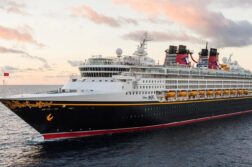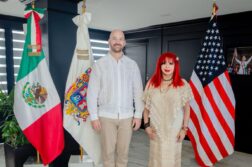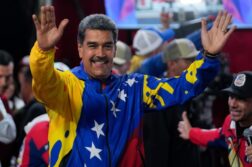CAPE CANAVERAL, Fla. (AP) — Despite more storms in the forecast, two NASA astronauts arrived at the launch pad Saturday for a second attempt at a history-making ride into orbit aboard a rocket ship built by Elon Musk’s SpaceX company.

With the flight already delayed three days by bad weather, forecasters put the odds of acceptable conditions at 50-50 for the 3:22 p.m. liftoff of the 270-foot Falcon 9 rocket in what would be the first launch of astronauts into orbit by a private company.

It would also be NASA’s first human spaceflight launched from U.S. soil in nearly a decade.

Doug Hurley and Bob Behnken pulled on their angular, white-and-black spacesuits with help from technicians wearing masks, gloves and black hoods that made them look like ninjas.

Before setting out for the launch pad in a gull-wing Tesla SUV — another Musk product — Behnken pantomimed a hug of his 6-year-old son, Theo, and said: “Are you going to listen to Mommy and make her life easy?” Hurley blew kisses to his 10-year-old son and wife.

SpaceX and NASA managers monitored the weather not just at Kennedy Space Center but all the way up the Eastern Seaboard and across the North Atlantic to Ireland. Waves and wind need to be within certain limits in case the astronauts have to make an emergency splashdown on the way to orbit.

Their destination is the International Space Station, a 19-hour flight away.
Ever since the space shuttle was retired in 2011, NASA has relied on Russian spaceships launched from Kazakhstan to take U.S. astronauts to and from the space station.
“I would be lying to you if I told you I wasn’t nervous,” NASA Administrator Jim Bridenstine said before the launch attempt. “We want to do everything we can to minimize the risk, minimize the uncertainty, so that Bob and Doug will be safe.”
Wednesday’s countdown of the rocket and its bullet-shaped Dragon capsule was halted at just under 17 minutes because of the threat of lightning.
President Donald Trump and Vice President Mike Pence planned to return for the second launch attempt.
NASA tried to discourage spectators because of the coronavirus outbreak and severely limited the number of employees, visitors and journalists inside Kennedy Space Center. At the center’s newly reopened tourist stop, though, all 4,000 tickets for the launch were snapped up in a few hours.
And by early morning, spectators began lining the area’s beaches and roads. Signs along the main beach drag urged “Godspeed.”
Among the spectators was Neil Wight, a machinist from Buffalo, New York, who staked out a view of the launch pad from a park in Titusville.
“It’s pretty historically significant in my book, and a lot of other people’s books. With everything that’s going on in this country right now, it’s important that we do things extraordinary in life,” Wight said. “We’ve been bombarded with doom and gloom for the last six, eight weeks, whatever it is, and this is awesome. It brings a lot of people together.”
NASA hired SpaceX and Boeing in 2014 to taxi astronauts to and from the space station, under contracts totaling $7 billion. Both companies launched their crew capsules last year with test dummies. SpaceX’s Dragon aced all of its objectives, while Boeing’s Starliner capsule ended up in the wrong orbit and almost was destroyed because of multiple software errors.
As a result, the first Starliner flight carrying astronauts isn’t expected until next year.





